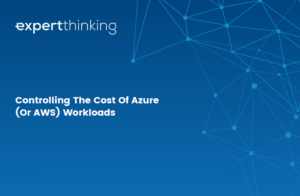Concentration risk and cloud – fact, not fiction
We are strong advocates for cloud technologies. It would be a bit odd if we weren’t given what we do. Cloud delivers significant benefit to organisations that embrace the technology for the right reasons and in the right way. No half measures, fully DevOps enabled, ways of working aligned, automation in place. Savings significant, quality enhanced and time to market slashed.
But as we move more workloads to the cloud we, as a society and as technology companies, are significantly increasing the risk by choosing one of only two or three companies that we believe can provide the scale of service, depth of capacity etc. that we require. We know who the companies are. They’re household names. Too big to fail. That’s the bet we make by investing in a single provider. Do we consider the potential should they fail? How will it affect our business? We tend to focus on security, data sovereignty (perhaps) and cost (occasionally) but we ignore concentration risk. We tend to do it because it’s convenient, not because it’s the right thing to do.
With a marketplace currently comprising three major players (IBM, Oracle and one or two others may disagree but as it stands they really are bit players whatever they may say), if we are fully invested in one, we run a risk that, until recently, was thought highly unlikely. The terrible events surrounding Coronavirus have forced companies wholesale onto cloud which caused a massive spike in demand and, with it, service contention. This caused issues with capacity, so much so that even large (read Fortune 500 companies) have been impacted over the past few months. If you’re a small company needing some compute, at times it has been a real struggle to get any capacity at all. Major multi-national organisations that we know of did not patch IaaS VMs because they were not 100% sure that servers would come back up as the underlying physical capacity was being re-allocated.
Vendors only increase capacity when it’s required and based on “known” growth in consideration of implementation lead times. What we’ve seen over the past few months far exceeds those trends and, as a result, consumers have been impacted – in some cases very significantly.
You may say that this is a black swan event, something that happens once a decade – once a century, even. But, as with all such events (and they happen more often than you think), it is important we take the time to reflect and decide if investing in one provider is the smartest thing to do.
Especially when you consider the issue is unlikely to be resolved in the medium-term as measures in place to combat the spread of Coronavirus severely impact the ability to build the mega data centres used to increase cloud capacity.




